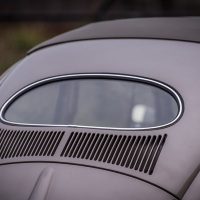The Truth About Vehicle Blind Spots And South Carolina Car Accidents

If a car accident occurs because one driver did not see the other, it goes without saying that the accident was preventable. There are many reasons that one driver might not see another until it is too late to avoid a collision, from cell phone distractions to slowed reaction time due to alcohol impairment. In some cases, though, it is hard to see another car that is close enough to yours to be in danger of colliding, even when you are doing everything right. For example, rain, snow, and fog can reduce the visibility distance considerably. Dark window tints on your windshield can make it harder to see pedestrians and bicyclists; for this reason, South Carolina law sets restrictions on the window tints that drivers can use. The design of your car even makes it harder to see other cars that are in certain positions in relation to your car, even when they are nearby. Drivers must be aware of their surroundings, including nearby vehicles that are in difficult to see positions, known as blind spots. If you have been injured in an accident where you were in the other driver’s blind spot, contact a Columbia car accident lawyer.
How to Reduce Blind Spots When You Are Driving
A blind spot is an area near your car that you cannot see when looking ahead of you or in your rearview mirror or side view mirrors. The reason you cannot see these areas is because the frame of your car or the windshield mount of your rearview mirror is blocking your view. You can reduce the size of your blind spots by properly adjusting your mirrors; in fact, when you take the road test to get a driver’s license, the examiner will ask you to do this. You should also adjust your seat position for maximum visibility; the taller you are, the smaller your blind spots will be.
Recent advances in vehicle technology have also made cars’ blind spots smaller. Rear-facing cameras make it easier to see the area behind you when reversing your car. A high school student in Pennsylvania even invented a “blind spot” camera mounted on the part of your car’s frame that normally blocks your view, effectively enabling you to see your blind spot.
How Blind Spots Affect Liability in South Carolina Car Accidents
The most frequent scenario where blind spots cause collisions is when a driver who is changing lanes does not see another car in his or her blind spot. In most blind spot-related accidents, the driver who failed to see his or her blind spot is usually at fault. A blind spot is not an area that is completely invisible; it is simply not visible from a particular position. In other words, drivers must make an effort to look around them before turning, reversing, or changing lanes.
Let Us Help You Today
The car accident lawyers at the Stanley Law Group can help you if you were injured because another driver did not notice you in the car’s blind spot. Contact The Stanley Law Group in Columbia, South Carolina or call (803)799-4700 for a free initial consultation.
Source:
aarp.org/auto/driver-safety/vehicles-mirrors-blind-spots/

